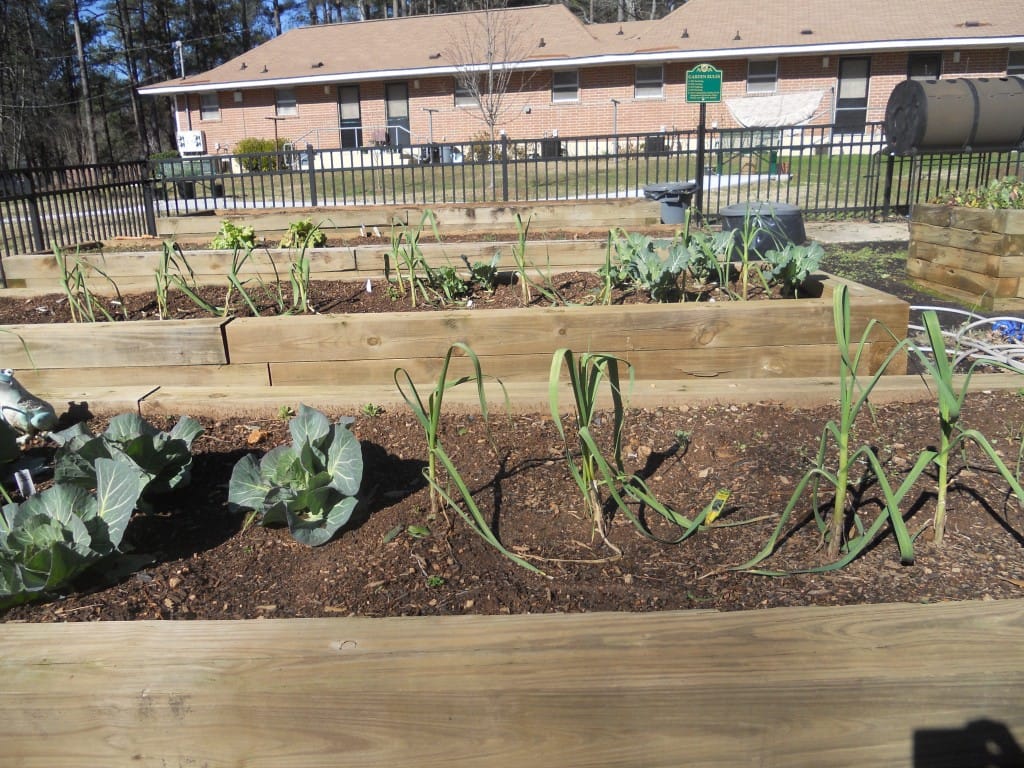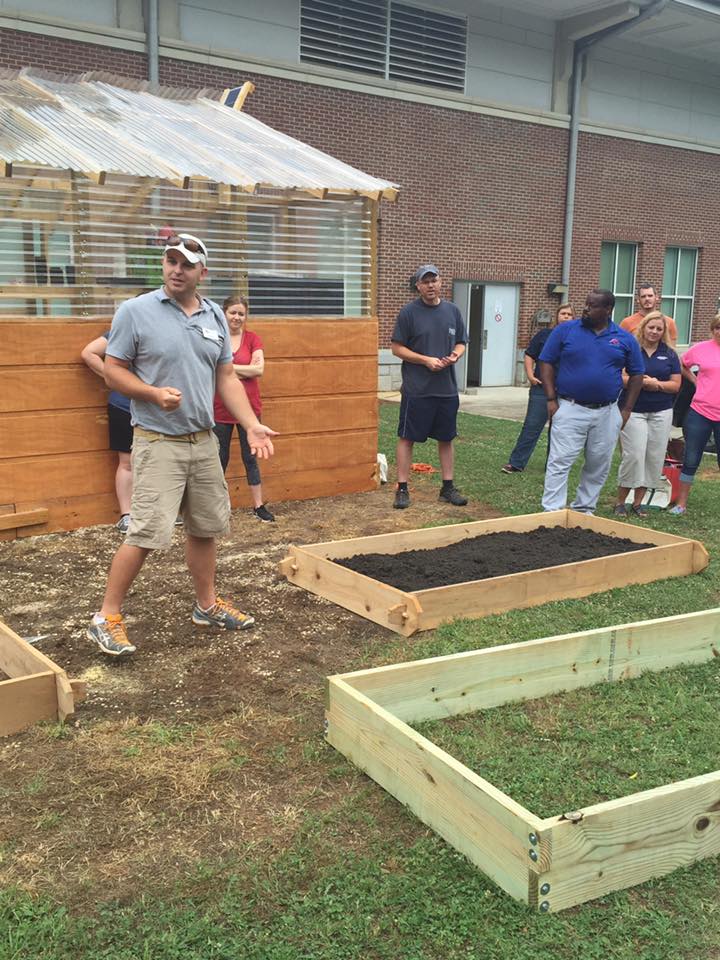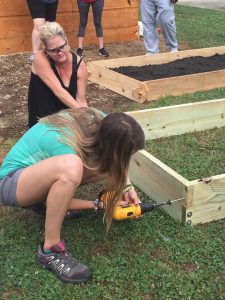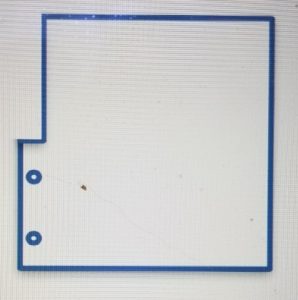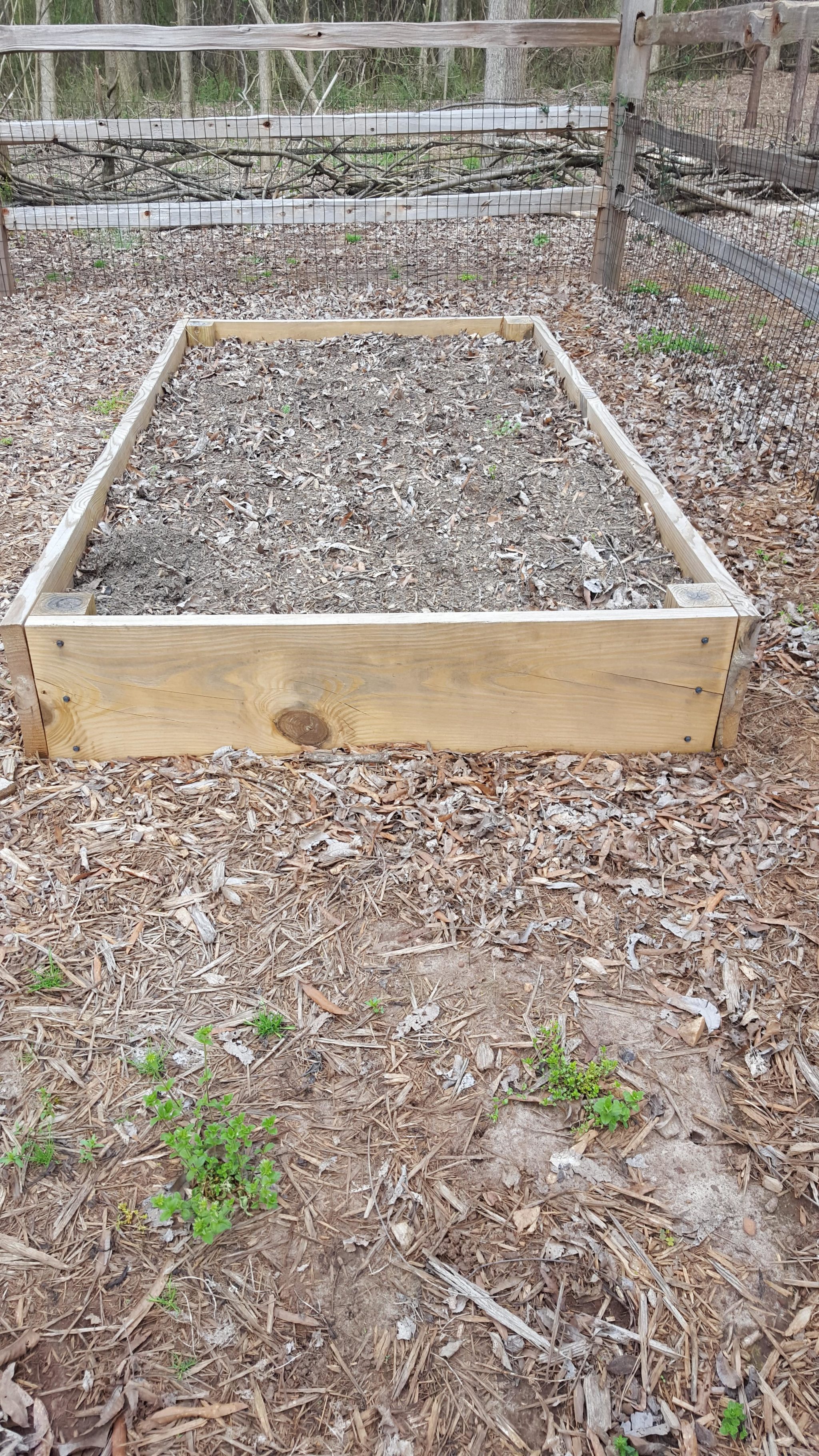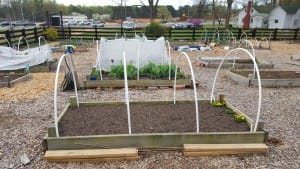Dr. David Berle and Robert Westerfield of UGA have created a series of publications on community/school gardens. One of the most popular circulars is Raised Beds vs. In-Ground Gardens. It is an excellent resource when determining whether or not raised beds would work for your garden.
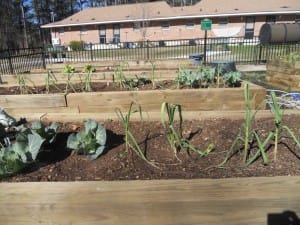
Raised beds are defined as elevated boxes that are manageable in size and are filled with enough soil to support plants without using the soil underneath the box. The height of the boxes can vary. Tall boxes can be very beneficial to senior gardeners who are more comfortable working while standing instead of knelling down. When dealing with native soil of questionable quality, raised beds with imported soil are an easy solution.
Some other advantages of raised beds are:
- Prevention of soil compaction- raised boxes can limit foot traffic on the soil
- Less weeding and maintenance
- Reduced conflict – raised beds are very defined and easy to assign to participating gardeners
- Better drainage
- Extended garden area – raised beds can be placed on slopes, compacted soil, and even parking lots
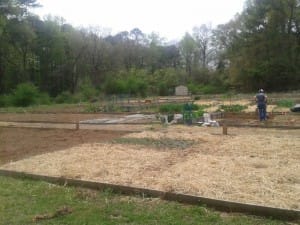
There are advantages to in-ground gardens. Raised bed materials can be costly for a garden group just starting and in-ground gardening can allow a tractor or tiller to easily help prepare the area. Other advantages include:
- Use of existing soil
- Less permanent – if the landowner deems the garden temporary or for good crop rotation
- Easier irrigation
- Less start-up work
- Clay soils do have benefits that are not found in man-made soils
As you start, or change, your garden carefully consider which arrangement will work for your group. Consider your current and future needs and decide how much time and resources you all are willing to commit. Your local UGA Extension office is a great resource for help.
Happy Gardening!
